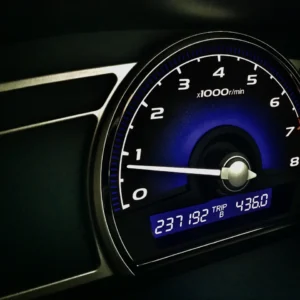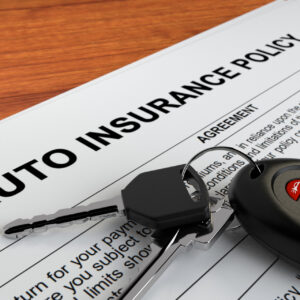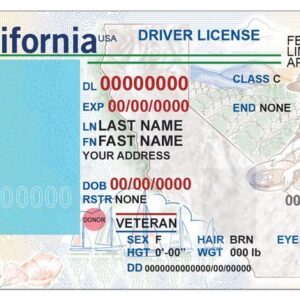Introduction
Navigating the world of auto insurance can feel like learning a new language—one filled with acronyms, fine print and ever-shifting regulations. If you’re a driver in Washington State, you’ve likely heard discussions about “no-fault” versus “at-fault” insurance systems. While most of the United States operates under an at-fault (or “tort”) framework, a handful of states utilize no-fault plans to streamline medical expense claims after collisions. But what do these terms really mean? And how do they impact your pocketbook, your ability to seek compensation, and the way you file a claim?
In this deep-dive guide, we’ll walk through:
- What at-fault and no-fault car insurance systems entail
- How Washington State’s laws shape your coverage requirements
- A side-by-side comparison of the two approaches
- Pros, cons and practical tips for drivers
- Key takeaways and FAQs every Washington motorist should know
Let’s demystify these concepts so you can select coverage that keeps you protected—and maximizes your peace of mind on the road.
What Is At-Fault Car Insurance?
Under an at-fault (or “tort”) system, the party responsible for causing a collision must compensate the other drivers for injuries and property damage. Here’s how it works in a nutshell:
- Determining Fault
- Law enforcement, insurance adjusters and sometimes courts assign a percentage of fault to each driver based on evidence such as police reports, witness statements and traffic laws.
- Claiming Damages
- The at-fault driver’s insurer pays for the injured party’s medical bills, vehicle repairs and other losses—up to policy limits.
- Potential Lawsuits
- If insurance coverage isn’t sufficient, the injured driver may file a lawsuit directly against the at-fault party to recover additional compensation.
Because compensation hinges on establishing fault, litigation can be more common—particularly in accidents involving serious injuries. However, this system also broadly incentivizes safe driving, since higher fault assignments typically lead to rate increases or legal exposure.
Key characteristics of at-fault insurance systems
- Liability for damages is assigned after the fact.
- Drivers can pursue third-party claims against the at-fault insurer.
- Premiums often correlate with your personal driving record and accident history.
What Is No-Fault Car Insurance?
A no-fault insurance system requires each driver’s own insurer to cover their medical expenses (and sometimes certain other costs) regardless of who caused the crash. The primary goals are to:
- Streamline claims for minor injuries by avoiding lengthy liability determinations
- Reduce lawsuit frequency for small-value injuries
- Control legal costs and expedite medical treatment
Typically, no-fault coverage comes in the form of Personal Injury Protection (PIP), which may pay for:
- Medical expenses (hospital, physician, rehabilitation)
- Lost wages (up to a specified percentage)
- Funeral costs (in fatal accidents)
- Some states also include coverage for essential services like childcare when the injured cannot perform them
However, most no-fault states still allow victims to “opt out” or pursue a third-party lawsuit for serious injuries that exceed statutory thresholds (e.g., catastrophic harm).
Did you know?
Twelve states currently enforce full no-fault systems, and three more offer a choice no-fault option—allowing drivers to select either standard at-fault or PIP-enhanced coverage. (1800lionlaw.com)
Washington State’s Auto Insurance Framework
Contrary to some misconceptions, Washington State is not a no-fault state. Instead, Washington adheres to a traditional at-fault (“tort”) system. The driver deemed responsible for the collision must compensate others for their damages, either through insurance or personal assets if policy limits fall short. (zbhlaw.com, washingtoninjury.com)
Mandatory Coverage Requirements
Per Washington’s mandatory auto insurance law, every driver must carry at least the following minimum liability limits:
| Coverage Type | Minimum Limit | Description |
|---|---|---|
| Bodily Injury Liability | $25,000 per person$50,000 per accident | Pays for injuries to others when you’re at fault. |
| Property Damage Liability | $10,000 per accident | Pays for damage to others’ property (e.g., vehicles). |
Source: Washington State’s mandatory auto/motorcycle insurance law (insurance.wa.gov)
Beyond these basics, insurers must offer Personal Injury Protection (PIP), but Washington drivers can waive it in writing if they choose not to purchase PIP coverage. (marianomoraleslaw.com)
Optional Coverages to Consider
- Collision (repairs your vehicle after an accident)
- Comprehensive (covers non-collision losses like theft, fire or weather damage)
- Uninsured/Underinsured Motorist (protects you if the at-fault driver lacks sufficient insurance)
- Medical Payments (MedPay) (pays medical bills regardless of fault, supplementing liability coverage)
Your choice of add-ons should reflect your risk tolerance, driving habits and financial comfort zone.
Comparing No-Fault vs At-Fault: Key Differences
Below is a concise comparison to help you visualize the contrasts between the two systems:
| Aspect | At-Fault (Tort) | No-Fault (PIP) |
|---|---|---|
| Claim Process | Must establish fault; claim against third-party insurer if you’re not at fault. | Claim directly with your own insurer; fault irrelevant for PIP. |
| Litigation Frequency | Higher for injury disputes or large-scale damages. | Lower for minor injuries; lawsuits only for “serious” injuries. |
| Coverage Scope | Liability only (medical/property of others); add-ons for your own damages. | Medical expenses, lost wages, funeral costs for you and passengers. |
| Premium Impact | Rates tied closely to fault determinations and driving history. | Premium reflects PIP cost; fewer at-fault claims may stabilize rates. |
| Cost Control | Potentially high legal costs for disputed claims. | Limits lawsuit volume, reducing legal expenses for minor injuries. |
Pros and Cons of At-Fault Insurance in Washington
Understanding the benefits and drawbacks of Washington’s at-fault framework can help you tailor your coverage:
Pros
- Incentivizes safe driving by tying fault to future premiums and potential lawsuits.
- Simplified liability limits—you know exactly what your policy covers for bodily injury and property damage.
- Access to full compensation for serious injuries through third-party litigation if policy limits are insufficient.
Cons
- Potential delays in payment, as fault must be determined before claims settle.
- Higher out-of-pocket risk if the at-fault driver is uninsured or underinsured.
- Frequent legal disputes for cases hovering around liability grey areas.
How Claims Work Step-by-Step (At-Fault System)
- Immediate Actions Post-Accident
- Ensure safety: move to a safe location, call 911 if injuries are severe.
- Exchange information: names, contact details, insurance policy numbers and vehicle details.
- Report to Insurer
- Contact your insurer promptly—even if you believe you’re not at fault—to initiate the claims process. (insurance.wa.gov)
- Provide photos, witness names and the police report number to support your case.
- Investigation & Fault Determination
- The at-fault party’s insurer assigns an adjuster to review evidence and assign liability percentages.
- Washington applies a comparative negligence rule: if you’re partially at fault, your compensation is reduced proportionally. (washingtoninjury.com)
- Settlement or Litigation
- Minor to moderate claims often settle via insurer negotiations.
- For large medical bills or disputed fault, litigation may ensue—either directly against the at-fault driver or their insurer.
- Repairs & Medical Payment
- Once fault and policy limits are confirmed, insurers issue payments for vehicle repairs, medical treatments and other covered costs.
Tips for Washington Drivers
- Consider Uninsured/Underinsured Motorist Coverage.
Nearly 1 in 8 drivers nationwide lack adequate insurance—adding this coverage shields you if the at-fault party can’t pay. - Document Everything.
Take clear photos of vehicle damage, roadway conditions and injuries. Obtain contact details for all witnesses. - Review Your Policy Annually.
Life changes—marriage, college graduation, new teen driver—can all impact your coverage needs and discounts. - Shop Around.
Rates can vary by hundreds of dollars. Compare quotes from multiple insurers, and ask about discounts for safe-driving courses, bundled policies, or low mileage.
Frequently Asked Questions
1. Can I still get Personal Injury Protection (PIP) in Washington?
Yes. While Washington drivers must affirmatively decline PIP if they don’t want it, insurers are required to offer it. You may find PIP valuable for covering medical bills quickly, without waiting for fault determination. (marianomoraleslaw.com)
2. What happens if I’m partially at fault?
Washington follows a pure comparative negligence rule. For example, if you’re found 20% at fault in a $10,000 damage claim, you’ll receive 80% of the award ($8,000). (washingtoninjury.com)
3. Are small claims worth pursuing in an at-fault state?
For minor fender-benders, the hassle of proving fault and negotiating with insurers might outweigh the benefits—especially if you have a deductible or your premium will spike. In such cases, paying out-of-pocket for small repairs can sometimes be more cost-effective.
4. How will the new “second opinion rule” affect me?
Effective January 1, 2026, Washington’s “second opinion” law lets drivers request independent appraisals when disputing repair estimates. This can protect you from lowball offers and ensure fair reimbursement. (the-sun.com)
Conclusion
Washington State’s adherence to an at-fault car insurance framework means that understanding liability, documentation and policy limits is crucial for every motorist. Unlike no-fault states that prioritize speed of medical expense coverage, Washington emphasizes legal responsibility and compensation through the at-fault party’s insurer. By familiarizing yourself with key terms—such as comparative negligence, bodily injury liability and optional PIP—you can make informed decisions about your coverage and claims strategy.
Whether you opt for the minimum liability limits or choose to bolster your protection with collision, comprehensive and uninsured motorist policies, systematic research and periodic policy reviews will ensure you drive away with the best possible peace of mind. After all, the road is unpredictable—but your insurance strategy doesn’t have to be.
This article drew on insights from the Washington State Office of the Insurance Commissioner, legal analyses on tort vs. no-fault systems, and real-world case studies to deliver accurate, up-to-date guidance for every Washington driver.






